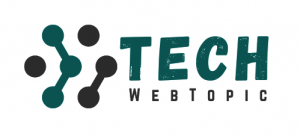In the world of precision automation, Newport Robot Systems are trusted for their reliability, high-performance motion control, and exceptional accuracy. From semiconductor wafer handling to laboratory automation and photonics applications, these systems play a critical role in processes where even the smallest deviation can lead to costly inefficiencies.
Like all sophisticated automation systems, however, Newport robots are not immune to performance challenges. Over time, components wear out, sensors drift, & alignment issues appear. Understanding these issues and knowing how to fix them properly are keys to smooth, accurate, and unbroken operations.
Why Do Newport Robot Systems Encounter Issues?
Any top-notch automation platform is susceptible to issues that can result from a wide variety of factors, such as environmental influences, a long period of use, or incorrect maintenance. In most cases, the problem may be a sudden change in temperature, vibration, or dust that can deteriorate the mechanical and electrical parts of the equipment.
It can be said that the worst problems with Newport systems are incorrect robot calibration, motion control errors, and robot alignment issues. We will investigate each one of them more thoroughly and examine their effect on the system’s performance.
1. Robot Calibration Issues
One of the most common issues in robotic systems, including the Newport PM500 Stage and other precision motion platforms, is calibration of drifts. Calibration defines the robot’s precision in movement and positioning. Due to mechanical wear, environmental influences, or changes in power supply, reference points can experience a slow drift over time.
Symptoms:
- Inconsistent movement accuracy
- Repeated positioning errors
- Unexpected deviations during automated cycles
Fix:
Perform periodic calibration checks with known standards. Recalibrate axes after every mechanical adjustment, component replacement, or update to software. Also, in the case of continued drift, check the encoders and sensors for any form of damage or contamination. Keeping calibration logs helps track patterns and prevent recurring issues.
2. Motion Control Errors
Communication faults, firmware issues, or electrical noise within the control system are common causes of motion control errors. Advanced motion controllers from Newport are designed for high precision; however, any signal transmission irregularity can disrupt their capability for maintaining synchronization and smoothness in motion.
Symptoms:
- Jerky or inconsistent motion
- System freezes or restarts during operation
- Error in the path tracking, delays
Fix:
It is advisable to first perform troubleshooting at the Newport stage by inspecting the controller settings & confirming that the firmware is compatible. Examine every electrical connection to find any cable that may be loose or any connector that may be damaged. Besides that, ensure that the control software is the latest version and that there are no configuration conflicts in it. Apart from that, the installation of surge protection and supplying the power from a stable source will also lessen the occurrence of signal interference.
3. Robotic Alignment Problems
Proper alignment is necessary when applications involve wafer handling robots or the positioning of optical components. Misalignments of even a fraction of a millimeter may lead to serious quality issues in production environments, such as semiconductor manufacturing or precision optics assembly.
Symptoms:
- Misaligned components or wafers
- Uneven loading or mechanical strain
- Reduced throughput or accuracy in automated tasks
Fix:
Alignment issues often result from mechanical wear or environmental vibrations. Recheck all mounting points, mechanical joints, and support structures. Use laser alignment tools or optical sensors to verify proper axis orientation. In cleanroom applications, ensure vibration isolation tables are functioning correctly to maintain precision alignment.
4. Faults within Sensors and Encoders
Encoders and sensors are the main sources of feedback that make positioning and motion tracking very accurate. In the case of faulty or dirty sensors, the feedback will be inaccurate, resulting in a loss of communication between the software & hardware.
Symptoms:
- Delayed or erratic motion response
- Error messages during startup
- Data from faulty feedback systems
Fix:
Clean sensors regularly using only approved materials. Replace damaged encoders immediately in order to prevent cascading control errors. Periodically perform system diagnostics to detect failing sensors before actual performance issues occur.
5. Mechanical Wear and Precision Stage Issues
The Newport PM500 Stage & similar motion systems depend on precision bearings, guides, and motors. After a while, these components can degrade, leading to reduced precision and efficiency. Mechanical wear can manifest as vibrations, backlash, or uneven motion.
Symptoms:
- Reduced accuracy & repeatability
- Noisy or rough motion during operation
- Increased Downtime or Maintenance Alerts
Fix:
Implement routine precision stage repair and lubrication schedules. Inspect bearings and linear guides for wear or contamination. Prompt replacement of worn components ensures smoother motion and prolongs the lifespan of the system.
Tips for Long-Term Reliability in Robot Maintenance
The optimal strategy to ensure reliability of operation & prevent downtime is proactive maintenance. Here are a few robot maintenance tips to assist you get the most from your Newport systems:
- Schedule Regular Inspection: The components of the robot should be visually & functionally checked every few months.
- Keep your work area clean: Serious damage can be done to a motion system from dust and humidity.
- Update Firmware Regularly: Many performance improvements and bug fixes come from software updates.
- Temperature & Vibration Monitoring: Environmental sensors should be used to maintain stable conditions.
- Document Every Adjustment: Maintenance logs assist in tracking performance patterns and estimating possible failures.
Besides avoiding unexpected failures, following such practices will provide definite improvements in the precision and productivity of your automation system.
Maximizing System Efficiency Through Preventive Action
Proactive maintenance is not just about repairing parts; it is also a part of prevention. Frequent checks, adjustments, and maintenance of parts can essentially reduce the time, the system is out of use and the money spent on repairs.
Additionally, incorporating predictive analytics into your maintenance routine periodically can significantly enhance system reliability. Keeping an eye on the machinery data in real-time enables engineers to recognize that even the slightest performance changes indicate a potentially tricky situation is approaching.
The Future of Newport Robot Systems: Precision Through Care
While automation continues to advance, the maintenance of system precision is increasingly complex and critical. Engineered for excellence, Newport Robot Systems depends on consistent care and attention to detail for long-term reliability.
As the demand for semiconductor manufacturing, life sciences research, & optical engineering continues to grow, precision automation is no longer optional; it’s necessary. Regular maintenance, calibration, & performance analyses ensure your system maintains alignment with the highest standards of accuracy and efficiency.
Conclusion
Even the most sophisticated robotic systems demand continued attention to maintain their functionalities. From issues of robotic alignment to problems of motion control, every problem has a solution in proper maintenance and calibration. First comes understanding the particular demands of your automation environment as the first step towards preventing costly downtime and assuring long-term operational excellence.
For organizations requiring specialist advice, Kensington Labs is dedicated to providing the most dependable and innovative wafer handling robots and precision motion control stages. Their commitment to engineering excellence and precision ensures your robotic systems continue to deliver the accuracy and dependability required of high-tech industries.
If you take a step ahead and do the right things to keep your Newport Robot Systems in good condition, they will continue to operate smoothly, and this is how you achieve steady accuracy and efficiency, along with peace of mind.
Author Bio: Mateo Gonzalez is a dedicated professional at Dublin Technology Center Workspaces, where he plays a key role in supporting businesses with flexible office solutions. He specializes in crafting content that showcases the benefits of flexible office solutions. With a strong background in workspace management and client relations, he ensures companies have the right environment to thrive.


